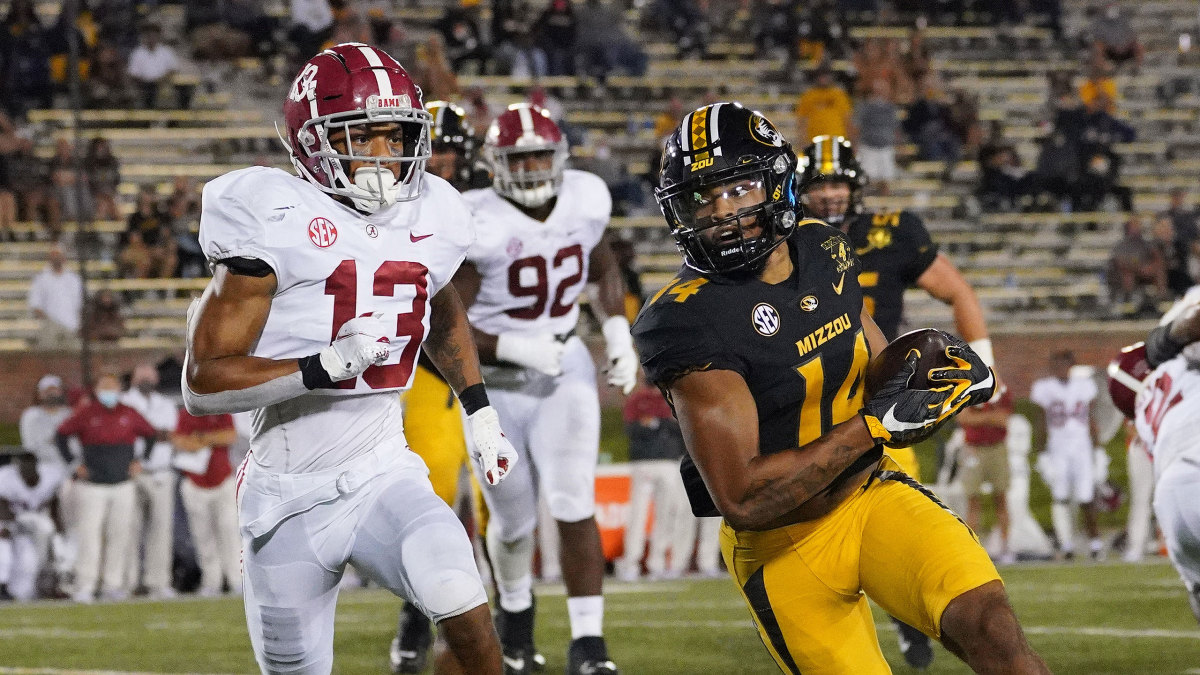'It Was a Giant Puzzle': Behind the Scenes With the SEC's Scheduling Czar in a Year Like 2020
ATLANTA, Ga. — Mark Womack has never been a puzzle guy. But, like it or not, the long-time SEC scheduling master’s legacy is rooted in just that—a puzzle. And this year has been the biggest, most complicated and consequential puzzle in the history of the league.
If all goes as planned this weekend, Womack will have, for the most part, solved that puzzle. The conference is on pace to play 68 of 70 scheduled games, and though those two missing pieces bother him, he’ll take it.
“I’ve had enough puzzles for at least a few years,” Womack says, laughing, during an interview Wednesday. “It was a giant puzzle, and it was challenging to get everything moved around to get the games in.
“I looked back on it and said, ‘We only had to move 15 games.’”
The final pieces of the puzzle will slide into place this weekend, presuming three final regular-season games are completed. They are the undercard to the main event: No. 1 Alabama vs. No. 7 Florida in the SEC championship game here in Atlanta.
If those three games do get played, the SEC will have completed the highest percentage of its scheduled games (97.1%) of any conference in the nation this year, according to The Associated Press.

Womack was the man in charge of leading a group effort to (1) set the SEC’s original schedule and (2) reorganize games midseason. He has been with the SEC office since 1978 and is on his fifth commissioner. He’s handled conference scheduling since the mid-’80s. He’s seen a lot, including the league’s reorganization into divisions in ’90 when South Carolina and Arkansas joined. And the overhauling of the SEC’s scheduling approach in 2012 when Missouri and Texas A&M were added.
He’s never seen anything like this.
“Not even close,” he says.
The Tuscaloosa native had the unenviable task of not only rearranging games in the middle of a season but also of choosing the additional two opponents for each team in a conference-only, 10-game schedule.
In a hotly competitive conference with rabid fans and outspoken coaches, this was no easy task. And, yes, he saw your suggestions on Twitter.
“There were no shortages of different thoughts, ideas and opinions,” he says, laughing. “I’ve tried to block most of them out of my memory.”
So how’d he do it? Pick names out of a hat? Throw darts against a scheduling board? Use computer models or mathematical formulas?
Computers were used, yes. In fact, computers simulated 100 versions of the 10-game schedule. But that data only assisted Womack and his staff. Common sense won in the end.
Each SEC team kept its previously scheduled eight games intact: six inside the division plus one permanent cross-divisional game and one rotational cross-divisional game.
Officials looked at the two additional opponents as part of a larger piece. They were focused on the strength of a team’s two new opponents plus its two existing nondivisional opponents. They looked at it like a four-game schedule.
They chose the two new teams based on creating the most equitable and balanced four-game cross-divisional schedule. How’d they do that? Like a typical fan might, actually.
“We looked back from a historical perspective, from the last decade or so,” Womack says. “Which teams have had more success than others and which are having more success?”
Two groups formed. Group 1 included the Alabamas, Georgias and LSUs. Group 2 included the Vanderbilts, Kentuckys and Mississippis. You get the picture.
If a team’s previously scheduled cross-division opponents were from Group 1, officials attempted to balance the schedule with additions from Group 2, and vice versa. It didn’t always work out perfectly. Tennessee and South Carolina, for instance, both ended up with arguably the toughest four-game nondivisional schedules. They got three teams from what might be considered Group 1 and one from Group 2. Meanwhile, Alabama and LSU had the opposite—three from Group 2 and one from Group 1.
But most of the league ended up with a 2–2 split. For example, Florida, which had previously scheduled LSU (G1) and Ole Miss (G2), got Texas A&M (G1) and Arkansas (G2). Missouri’s cross-divisional four were previously scheduled Arkansas and Mississippi State (G2s) plus new additions Alabama and LSU (G1s). However, Missouri’s full schedule was probably the toughest in the league, only because of inner-division games against Florida and Georgia.
An interesting wrinkle was LSU’s unexpected freefall this season. The Tigers started the season in the top six and currently sit at 4–5.
“You’re not going to be equal but you’re trying to be equitable,” Womack says.
This was a laborious process that unfolded in the late summer from within a conference room in the SEC office. It was a scheduling-type cave and its main inhabitants were Womack and SEC consultant Larry Templeton, each bouncing ideas off one another, running computer models and shifting around SEC logo magnets on a giant whiteboard. Templeton, the former longtime AD at Mississippi State, is one of the most respected people within the conference.
Here they were, two men attempting to solve the SEC’s scheduling puzzle. Their puzzling stretched through the season, of course. As games got postponed, they returned back to that whiteboard. At times, Womack recalls sitting at his desk and staring at a list of scheduled games as teams paused activities because of COVID-19 outbreaks.
He lost flexibility as the weeks passed. The SEC built in a makeup weekend on Dec. 12 and then added a second this weekend, but there were times where flexibility evaporated. That was the case with the two cancellations: Ole Miss–Texas A&M last weekend and Vanderbilt–Georgia this weekend.
“It became a jigsaw puzzle,” says Womack. “We had to practice patience. If we have to move a game and there’s not a place for it, let’s set the game aside and we’ll find a place for it as we get to the back end of the schedule.
“But what you worried about sometimes is not getting games to match up. You have one team playing and you look at who their opponent is supposed to be and they’re playing someone else.”
Before the puzzling began, the SEC had to make one critical decision that was the most hotly debated topic within the league office: to cancel all nonconference games, including four annual rivalries with the ACC. The decision eliminated Florida–Florida State, Georgia–Georgia Tech, Clemson–South Carolina and Kentucky-Louisville.
“The best thing we did was to play conference games only, and that was not an easy decision,” Womack says.
Months later, as the football regular season nears its end, Womack can kick up his feet and rela—well, no. He traveled to Atlanta on Thursday and he’ll receive testing results Friday from the six teams scheduled to play Saturday in their regular-season finales.
His fingers are crossed. But one thing is certain: There will be no more puzzling.
“I’m not a puzzle guy,” he says, “and I don’t think I will be after this year.”
